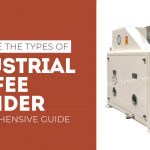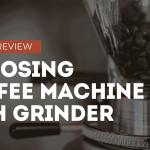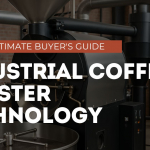The Cold Brew Revolution: Scaling Quality Through Technology
The cold brew coffee market has experienced explosive growth over the past decade, transforming from a niche specialty offering to a mainstream beverage category. Market analysts project the global cold brew coffee market to reach $1.63 billion by 2025, with a compound annual growth rate exceeding 25%. This remarkable expansion has created unprecedented opportunities for specialty coffee producers, beverage manufacturers, and coffee shop chains.
However, as demand surges, many producers face a critical challenge: how to scale production from artisanal batches to commercial volumes without compromising the quality attributes that made their cold brew successful in the first place. The answer lies in extraction technology—the systems, methods, and equipment that form the foundation of cold brew concentrate production.
Unlike traditional hot brewing methods, cold extraction presents unique challenges and opportunities. The extended extraction times, temperature sensitivities, and distinct flavor profiles of cold brew require specialized approaches that traditional coffee equipment simply cannot address efficiently at scale. The good news is that recent innovations in extraction technology are revolutionizing what’s possible, enabling producers to achieve consistency, efficiency, and quality simultaneously.
This article explores the cutting-edge extraction technologies reshaping the cold brew concentrate landscape, providing a comprehensive guide for producers seeking to optimize their operations and scale production while maintaining their quality standards.
Cold Brew Concentrate Fundamentals
Defining Cold Brew Concentrate
Cold brew concentrate is a highly concentrated coffee extract produced by steeping coffee grounds in cold or room-temperature water for an extended period, typically 12-24 hours. Unlike ready-to-drink (RTD) products, which are diluted and packaged for immediate consumption, cold brew concentrate serves as a versatile base ingredient that can be:
- Diluted with water, milk, or other beverages
- Used as an ingredient in coffee-based alcoholic drinks
- Incorporated into desserts and culinary applications
- Bottled for retail sale as a consumer concentrate
- Used as a base for RTD product lines
Concentrates typically feature total dissolved solids (TDS) measurements of 4-7%, compared to 1.5-2.5% for ready-to-drink products. This concentration level provides extended shelf stability and greater flexibility for downstream applications.
Traditional Production Methods and Their Limitations
The traditional approach to cold brew production relies on simple immersion techniques: coarsely ground coffee is submerged in cold water in vessels ranging from food-grade buckets to purpose-built brewing tanks. After steeping, the mixture undergoes filtration to separate the grounds from the liquid concentrate.
While this method produces excellent results at small scales, it presents significant challenges for commercial production:
- Time Inefficiency: The 12-24 hour brewing cycle creates production bottlenecks and limits capacity.
- Space Requirements: Immersion brewing requires large vessels and significant floor space relative to output.
- Labor Intensity: Manual handling of grounds and filtration processes increases labor costs.
- Consistency Challenges: Batch-to-batch variation can occur due to temperature fluctuations, inconsistent agitation, and variable ground-to-water contact.
- Scalability Constraints: Linear scaling requires proportional increases in equipment, space, and handling.
Key Quality Parameters
Successful scaling of cold brew production requires maintaining several critical quality parameters:
- Extraction Yield: The percentage of coffee solids dissolved during brewing, typically 18-22% for premium cold brew concentrates.
- Total Dissolved Solids (TDS): The concentration of dissolved coffee compounds, measured in percentage (typically 4-7% for concentrates).
- Shelf Stability: Resistance to microbial growth and oxidation, measured in weeks of refrigerated stability.
- Flavor Profile: The balance of acidity, sweetness, body, and aromatic compounds that define the product’s taste signature.
- Clarity: The absence of suspended particles and oils that can cause haze or sediment.
Modern extraction technologies must address these parameters while simultaneously resolving the efficiency and consistency challenges inherent in traditional methods.
Innovative Extraction Technologies
Advanced Immersion Systems with Automation and Temperature Control
Advanced immersion systems represent the evolution of traditional steeping methods, enhanced with automation, precise temperature control, and mechanical assistance.
Operating Principles: These systems maintain the basic immersion approach but introduce technological enhancements such as:
- Programmable agitation cycles to promote even extraction
- Precision temperature control systems (typically maintaining 36-42°F)
- Automated grinding, dosing, and filtration integration
- Sensors monitoring extraction parameters in real-time
Equipment Requirements:
- Insulated brewing tanks with temperature regulation
- Programmable agitation mechanisms
- Integrated filtration systems
- Control interfaces for program management
- Optional in-line quality monitoring tools
Pros:
- Familiar methodology with improved consistency
- Lower entry cost compared to more advanced technologies
- Flexibility in batch sizing
- Straightforward operation and maintenance
Cons:
- Still relatively time-intensive compared to newer technologies
- Moderate space requirements
- Limited extraction efficiency improvements
- Batch processing limitations
Quality Impact: Advanced immersion systems typically achieve 15-20% greater extraction efficiency than traditional methods while maintaining familiar flavor profiles. The temperature control provides more consistent results across seasonal ambient temperature variations.
Recirculation/Percolation Systems
Recirculation systems, also called percolation or “cold drip” systems, use continuous movement of water through a coffee bed to accelerate and control extraction.
Operating Principles:
- Water is continuously pumped through a densely packed column of grounds
- Gravity and/or pressure drive liquid movement
- The extracted liquid is either collected (single-pass) or recirculated multiple times
- Flow rates and patterns are precisely controlled
Equipment Requirements:
- Vertical extraction columns with filtration elements
- Precision pumps with flow rate control
- Distribution systems for even water dispersal
- Collection tanks with optional recirculation capability
- Cooling systems to maintain temperature during processing
Pros:
- Reduced extraction times (typically 4-8 hours)
- Enhanced extraction efficiency
- Improved space utilization (vertical configuration)
- Greater control over extraction kinetics
Cons:
- More complex equipment with higher maintenance requirements
- Potential for channeling (uneven extraction through the coffee bed)
- Higher energy consumption
- Requires more technical expertise to operate optimally
Quality Impact: Recirculation systems can produce concentrates with TDS ranges of 5-8%, higher than traditional immersion. The controlled flow can enhance certain flavor attributes, particularly fruity and floral notes, while potentially reducing some body characteristics if not properly calibrated.
Column Extraction Technology
Column extraction represents a significant advancement in cold brew technology, using vertical columns with sophisticated flow dynamics to optimize extraction.
Operating Principles:
- Coffee is packed into vertical columns with specialized geometry
- Multiple columns can be arranged in series or parallel configurations
- Controlled water distribution ensures even saturation and extraction
- Countercurrent flow can be employed for maximum efficiency
- Pressure and flow are precisely regulated
Equipment Requirements:
- Engineered extraction columns with distribution plates
- High-precision pumps and flow controllers
- Pressure regulation systems
- Inter-column transfer mechanisms for multi-stage setups
- Advanced filtration systems
Pros:
- Extraction time reduction to 2-4 hours
- Exceptional space efficiency
- Excellent extraction uniformity
- Scalable through modular column addition
- Reduced labor requirements
Cons:
- Higher capital investment
- Technical complexity
- More demanding cleaning protocols
- Specialized training requirements
Quality Impact: Column technology can achieve extraordinarily consistent results with extraction yields of 20-24%. The precise control allows manufacturers to target specific flavor compounds and create highly differentiated products with repeatable profiles.
[DIAGRAM SUGGESTION 1: Column extraction system showing multiple columns in series with flow direction indicators and key components labeled]
Nitrogen-Assisted Extraction
Nitrogen-assisted extraction uses dissolved gas to enhance extraction efficiency and protect quality attributes.
Operating Principles:
- Nitrogen gas is introduced during the extraction process
- The gas can be applied through:
- Direct infusion into the brewing liquid
- Pressurization of the extraction vessel
- Bubble-assisted agitation
- Nitrogen creates micro-agitation at the coffee particle surface
- The inert gas displaces oxygen, reducing oxidation
Equipment Requirements:
- Nitrogen generation or supply system
- Pressure-rated extraction vessels
- Gas dissolution equipment
- Pressure control systems
- Specialized degassing equipment for post-extraction processing
Pros:
- Extraction time reduction (typically 30-40%)
- Enhanced flavor preservation
- Extended shelf life of final product
- Reduced oxidation during processing
Cons:
- Additional gas-handling equipment required
- Higher operational complexity
- Increased safety considerations
- More variables to control
Quality Impact: Nitrogen-assisted methods can enhance the extraction of desirable aromatic compounds while limiting the extraction of certain bitter components. Products often show improved aromatic intensity and reduced oxidative notes, with shelf life extensions of 30-50%.
Ultrasonic-Assisted Cold Extraction
Ultrasonic technology represents one of the most innovative approaches to cold brew extraction, using sound waves to dramatically accelerate the process.
Operating Principles:
- High-frequency sound waves (typically 20-40 kHz) create cavitation in the brewing liquid
- Cavitation produces microscopic bubbles that implode, creating localized areas of extreme pressure and temperature
- These microenvironments enhance extraction rates without bulk heating
- The process creates micro-agitation at the cellular level of the coffee grounds
Equipment Requirements:
- Ultrasonic generators with transducers
- Specially designed extraction chambers
- Cooling systems to counteract incidental heating
- Amplitude and frequency controls
- Robust construction to handle vibration
Pros:
- Dramatic reduction in extraction time (as little as 30-60 minutes)
- Increased extraction yields
- Enhanced extraction of desirable compounds
- Reduced floor space requirements
Cons:
- Higher initial capital expenditure
- Higher energy consumption
- Potential for undesirable flavor development if not properly controlled
- Noise management considerations
- More complex maintenance requirements
Quality Impact: Ultrasonic systems can achieve extraction yields of 22-26% with unique flavor profiles that often feature enhanced sweetness and reduced bitterness. The technology can selectively extract different compounds based on frequency and amplitude settings, allowing for unprecedented control over the final flavor profile.
Multi-Stage Extraction Processes
Multi-stage extraction represents a systems approach that combines different technologies into integrated processing lines.
Operating Principles:
- Coffee passes through a sequence of different extraction environments
- Each stage is optimized for specific compounds or extraction characteristics
- Parameters are independently controlled at each stage
- Intermediary processing (filtration, cooling) may occur between stages
- Continuous flow designs allow for uninterrupted production
Equipment Requirements:
- Multiple extraction technologies integrated into a system
- Transfer mechanisms between stages
- Centralized control systems
- In-line monitoring and adjustment capabilities
- Buffer tanks and flow management components
Pros:
- Optimized extraction of different compound classes
- Maximum efficiency and yield
- Continuous production capability
- Unparalleled control over final product specifications
- Excellent scalability
Cons:
- Highest capital expenditure
- Complex system design and engineering
- Requires sophisticated technical expertise
- Comprehensive maintenance programs required
Quality Impact: Multi-stage systems represent the pinnacle of extraction control, allowing producers to target specific flavor compounds at each stage. These systems can achieve consistent extraction yields of 23-27% while maintaining exceptional clarity and shelf stability. The flavor profile can be precisely tailored through adjustment of individual stage parameters.
[DIAGRAM SUGGESTION 2: Multi-stage extraction process flow showing different technologies integrated into a continuous production line]
Production Scaling Considerations
Batch Size Capabilities
Different extraction technologies offer varying batch size capabilities, which directly impact production capacity:
| Technology | Typical Minimum Batch | Typical Maximum Batch | Scalability Approach |
|---|---|---|---|
| Advanced Immersion | 50 gallons | 500 gallons | Multiple tanks |
| Recirculation | 25 gallons | 250 gallons | Multiple systems |
| Column Extraction | 20 gallons | Continuous operation | Additional columns |
| Nitrogen-Assisted | 100 gallons | 1,000 gallons | Larger vessels |
| Ultrasonic | 30 gallons | 300 gallons | Multiple units |
| Multi-Stage | 50 gallons | Continuous operation | Increased flow rate |
When transitioning from pilot to full production scale, many manufacturers find hybrid approaches most effective, starting with advanced immersion systems and gradually incorporating more sophisticated technologies as volume demands increase.
Extraction Time Optimization
Extraction time represents a critical factor in production capacity and capital efficiency. Modern extraction technologies focus on optimizing this variable through:
- Increased surface area contact (finer grinding balanced with filtration capabilities)
- Enhanced agitation methodologies
- Temperature manipulation within the cold range (33-45°F)
- Pressure application to accelerate diffusion
- Technology combinations to target different extraction phases
The most advanced systems have reduced traditional 24-hour brewing cycles to as little as 1-2 hours, representing more than an order of magnitude improvement in time efficiency without quality compromise.
Filtration Challenges and Solutions
As production scales increase, filtration often emerges as a critical bottleneck. Innovative solutions include:
- Depth Filtration Systems: Multi-layer filtration media with graduated pore sizes
- Centrifugal Separation: High-speed centrifuges that separate grounds from liquid without clogging
- Cross-Flow Filtration: Membrane systems that minimize filter fouling
- Pulse-Assisted Filtration: Intermittent pressure pulses that dislodge filter cake buildup
- Enzyme Treatment: Natural enzymes that break down filter-clogging compounds
Modern integrated systems often combine multiple filtration technologies in sequence, using coarse mechanical separation followed by fine polishing filtration to maximize throughput and clarity.
Quality Control and Consistency
Maintaining consistency across batches requires comprehensive quality control systems:
- In-line Monitoring: Real-time measurement of TDS, temperature, and flow rates
- Process Control Systems: Automated adjustment of parameters based on monitoring data
- Advanced Analytics: Spectroscopic analysis of key compounds during production
- Standardized Procedures: Documented processes for each production stage
- Environmental Controls: Stable temperature and humidity in production areas
- Water Quality Management: Consistent mineral content and purification
Leaders in the industry are increasingly adopting pharmaceutical-inspired quality approaches, including statistical process control and design of experiments methodologies to optimize and maintain quality parameters.
Shelf-Life Extension Techniques
Commercial scaling necessitates addressing shelf-life considerations through:
- Aseptic Processing: Clean-room environments for filling and packaging
- Cold-Chain Management: Uninterrupted refrigeration throughout distribution
- Modified Atmosphere Packaging: Nitrogen flushing of containers
- High-Pressure Processing (HPP): Non-thermal pasteurization
- Microfiltration: Removal of microbial contaminants while preserving flavor
- Natural Preservatives: Clean-label preservation options
The most effective approaches combine multiple preservation strategies while minimizing impact on the organoleptic properties of the concentrate.
Comparative Analysis of Extraction Technologies
| Technology | Production Capacity (gal/day) | Extraction Efficiency | Equipment Cost Range | Space Requirements | Labor Requirements | Energy Consumption |
|---|---|---|---|---|---|---|
| Advanced Immersion | 100-1,000 | Moderate (18-20%) | $50,000-200,000 | High | Moderate | Low |
| Recirculation | 200-1,500 | Good (19-22%) | $75,000-300,000 | Moderate | Low-Moderate | Moderate |
| Column Extraction | 500-5,000 | Excellent (20-24%) | $150,000-500,000 | Low | Low | Moderate |
| Nitrogen-Assisted | 300-3,000 | Good (19-23%) | $100,000-400,000 | Moderate | Moderate | Moderate |
| Ultrasonic | 200-2,000 | Excellent (22-26%) | $200,000-600,000 | Low | Low | High |
| Multi-Stage | 1,000-10,000 | Superior (23-27%) | $500,000-2,000,000 | Moderate | Low | High |
This comparative analysis reveals important trends:
- Higher initial investment generally correlates with increased automation, reduced labor requirements, and higher production capacities
- More advanced technologies typically achieve higher extraction efficiencies, potentially reducing coffee usage per gallon of final product
- Space efficiency varies significantly between technologies, with column systems offering the best output per square foot
- Energy consumption tends to increase with technological sophistication, though this is often offset by production efficiency gains
ROI Analysis Framework for Technology Investment
Evaluating return on investment for extraction technology requires consideration of multiple factors beyond simple capacity increases:
Capital Expenditure Considerations
- Initial equipment purchase costs
- Installation and commissioning expenses
- Facility modifications required
- Ancillary equipment needs (water treatment, refrigeration, etc.)
- Projected equipment lifespan
Operational Impact Analysis
- Coffee usage efficiency (extraction yield improvement)
- Labor cost reduction
- Production capacity increase
- Energy consumption changes
- Water usage efficiency
- Maintenance requirements and costs
Quality-Related Value Factors
- Consistency improvements
- Shelf-life extension benefits
- Product differentiation capabilities
- Reduction in quality control rejections
- Ability to create premium product tiers
Strategic Value Assessment
- Market responsiveness (ability to scale quickly)
- Innovation perception among customers
- Sustainability improvements
- Future expansion compatibility
- Intellectual property development potential
A comprehensive ROI model should incorporate quantitative metrics (payback period, internal rate of return, net present value) alongside qualitative strategic advantages. Industry benchmarks suggest that investments in advanced extraction technology typically achieve payback periods of 18-36 months for operations producing at least 5,000 gallons monthly.
Emerging Technologies and Future Trends
The cold brew concentrate production landscape continues to evolve, with several emerging technologies showing promise:
Pulsed Electric Field (PEF) Extraction
This technology uses brief pulses of high voltage to create pores in the cellular structure of coffee grounds, dramatically increasing extraction efficiency without heat. Early implementations show 70-80% reductions in extraction time with enhanced aromatic preservation.
Supercritical CO₂ Extraction
Borrowed from the decaffeination industry, this technology uses pressurized carbon dioxide in a supercritical state to selectively extract components from coffee. The method allows unprecedented control over which compounds are extracted, potentially enabling designer flavor profiles.
Enzyme-Assisted Extraction
Specialized food-grade enzymes can break down specific cellular structures in coffee, releasing compounds that are typically difficult to extract in cold conditions. This biotechnology approach shows potential for enhancing both efficiency and flavor development.
Hydrodynamic Cavitation
Similar to ultrasonic technology but using fluid dynamics rather than sound waves, hydrodynamic cavitation creates microscopic imploding bubbles that enhance extraction. The technology offers energy efficiency advantages over ultrasonic systems.
AI-Driven Process Control
Artificial intelligence systems that continuously monitor and adjust extraction parameters based on real-time data are beginning to emerge. These systems can adapt to variations in coffee characteristics and environmental conditions to maintain consistent output specifications.
Cellular Agriculture Applications
Research into lab-grown coffee cells may eventually provide new extraction substrates with designer compound profiles, allowing for novel product development beyond what’s possible with traditional coffee beans.
Industry leaders are advised to monitor these developments and consider pilot programs for technologies that align with their strategic product directions.
Implementation Case Study: Scaling from Craft to Commercial
The following theoretical case study illustrates a successful technology implementation pathway for a growing cold brew producer:
Initial State: Craft Production
- Production Volume: 500 gallons/month
- Method: Traditional immersion in 50-gallon food-grade containers
- Process Time: 18 hours brewing + 6 hours filtration
- Labor: 2 full-time equivalents
- Challenges: Inconsistent batches, filtration bottlenecks, space constraints
Phase 1: Semi-Automation (Month 0-6)
- Implementation: Advanced immersion system with temperature control and automated filtration
- Investment: $85,000
- Results:
- Production increased to 2,000 gallons/month
- Brewing time reduced to 14 hours
- Labor efficiency improved by 40%
- Batch consistency improved by 65%
Phase 2: Technology Integration (Month 7-12)
- Implementation: Column extraction system with two parallel columns
- Investment: $220,000
- Results:
- Production increased to 6,000 gallons/month
- Processing time reduced to 4 hours
- Extraction yield improved by 15%
- Space utilization improved by 60%
Phase 3: Full Commercial Scale (Month 13-24)
- Implementation: Multi-stage system combining column extraction with ultrasonic finishing
- Investment: $450,000
- Results:
- Production capacity reached 15,000 gallons/month
- Processing time reduced to 2 hours
- Product line expanded to include three distinct extraction profiles
- Shelf-life extended to 120 days through integrated processing technologies
Financial Outcomes
- Payback Period: 22 months
- Unit Cost Reduction: 34%
- Gross Margin Improvement: 18 percentage points
- New Market Access: National distribution through improved shelf-stability
This phased approach allowed the company to grow organically while implementing increasingly sophisticated technology aligned with their volume growth, minimizing downtime and financial risk.
Strategic Technology Selection Framework
When evaluating extraction technologies, producers should consider their specific circumstances against these key decision factors:
Volume-Driven Considerations
- Under 1,000 gallons/month: Advanced immersion or small recirculation systems offer the best value
- 1,000-5,000 gallons/month: Column extraction or nitrogen-assisted systems provide efficient scaling
- 5,000+ gallons/month: Multi-stage systems or parallel technology implementations become economically viable
Product-Driven Considerations
- Standard Concentrate Products: Column extraction offers excellent efficiency/quality balance
- Premium Flavor Profiles: Ultrasonic or multi-stage systems allow for flavor differentiation
- Extended Shelf-Life Products: Nitrogen-assisted or combined technologies with aseptic processing
- Organic/Natural Positioning: Advanced immersion with enhanced control may align best with brand story
Operation-Driven Considerations
- Space-Constrained Facilities: Column systems offer vertical efficiency
- Limited Technical Expertise: Advanced immersion provides simplicity with moderate improvement
- Sustainability Focus: Recirculation systems typically offer best water and energy efficiency
- Rapid Growth Trajectory: Modular column systems allow for incremental capacity addition
Conclusion: The Technology Imperative
As the cold brew market continues its explosive growth trajectory, extraction technology has emerged as the critical differentiator between craft producers and commercial leaders. The innovations discussed represent a fundamental shift from artisanal approaches to precision manufacturing methodologies, enabling quality and consistency at previously impossible scales.
For specialty coffee producers, beverage manufacturers, and coffee chains seeking to capitalize on the cold brew opportunity, these technologies offer clear pathways to profitable scaling. The most successful organizations will approach technology selection strategically, aligning their investments with their specific production goals, quality standards, and brand positioning.
The cold brew concentrate category has entered a phase of technological maturity, with proven solutions now accessible at multiple investment levels. Producers who embrace these innovations position themselves not merely to grow their production capacity but to define the quality standards and product innovations that will shape the future of this dynamic market segment.




